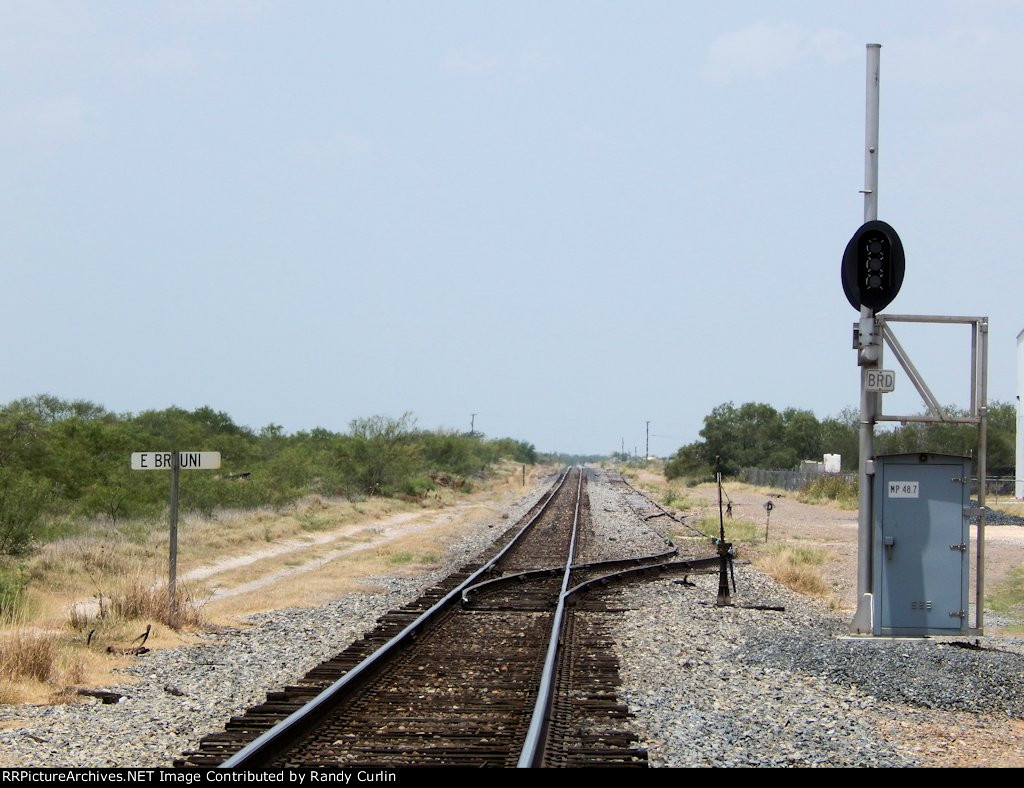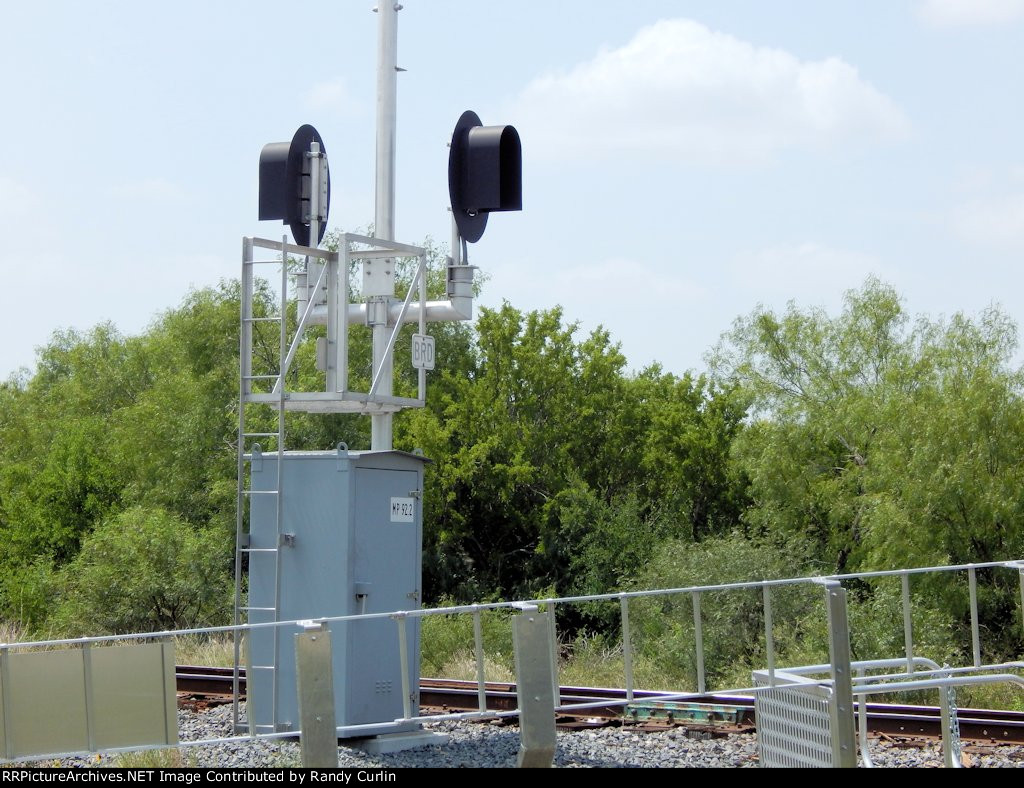With railroad signaling I really do learn new things every day especially when I get off the beaten path and what's less beaten than the Kansas City Southern. Track circuits and the principles of automatic block signaling are well over 100 years old. With metal wheels on metal rails, running an electric current through the rails is an easy way to provide continuous train detection with side benefits such as detecting improperly lined switches and broken rails. ABS is railroad signaling at its most basic with red, yellow and green lights how could this concept ever be ambiguous?
At first glance this rather ungainly signal looks like a fairly typical North American bi-directional automatic signal, however the football shaped targets and cheap, small LED lamp units combined with a hand throw switch and station sign should make more signal fans instantly think of some sort of point detection/switch position signal. These non-interlocked and lightly regulated faux signals are used in non-signaled territory where remote controlled switches have been installed or a an extra measure of safety was desired for hand operated sidings or industrial tracks.
While you would be correct in that these signals are of that type they do not however serve that function.
This is in actuality a broken rail detection signal, which was kinda given away by the big BRD plate under the head. So instead of being connected to a set of points, as is seen in yards and other trackage without train detection, this signal is actually hooked into a track circuit and carries out all the functions typically ascribed to track circuits. In addition to broken rails I assume it might also detect open switches or even rolling stock within the block. The caption on the photo reads that flashing green is used for a "no defects" indication so avoid confusion with a genuine Clear signal, but the question remains why would anyone install such a monstrosity?
The answer is that Automatic Block Signals are a regulated railroad safety system and BRD signals are not, even if they basically do the same thing on a technical level. Despite being track circuited this main line track is still considered non-signaled, with track warrants providing the vital safety protections. BRD are frosting on the cake that provide assurance above and beyond what the FRA requires. I suspect that they do not need the same types of inspections or maintenance or even have to meet the same hardware standards. The equipment used for the BRD system probably cost a fraction of what a full on CTC signal would with non-vital relays and wiring and shit ass signal heads that don't need to meet visibility requirements etc. The advantages is that the trains get increased assurance that the line ahead is clear and the company does not need to worry about running long, heavy trains up to the 60mph limit for non-signaled track.
The KCS is actually upgrading the line to full on CTC and as you can see in the foreground all the budget faux signals are going to need to be replaced with the fully kosher kind. However do not think this is the end of BRD's. With the PTC regulations the FRA maintained a 60mph speed limit on all track that lacks broken rail detection. We might eventually see lines with fully wireless signaling and wayside BRD signals to allow speeds even in excess of 80mph.
A blog devoted to explaining the ins and outs of North American railroad signaling, past, present and future. This blog seeks to preserve through photo documentation the great diversity and technical ingenuity of 20th century signaling and interlocking hardware and technology. Related topics cover interlocking towers and railroad communications infrastructure.
Note, due to a web hosting failure some of the photos and links may be unavailable.
Search This Blog
Tuesday, August 12, 2014
Subscribe to:
Post Comments (Atom)



Interesting system they have there. So I assume there's a stop aspect in there somewhere, is there also an approach aspect? One thing I'm also not clear on from this excellent post however is does it also show track occupancy? As in, if there's a train in the next block, will it drop to a more restrictive aspect, or is this strictly for broken rail?
ReplyDeleteI assume that this BRD system works the same with Stop and Approach (or a pseudo Approach) indication. It's basically a block signaling system in all but name. KCS sees the benefits to track circuit block, but didn't feel like paying the full cost. I'd say "thanks FRA" in a sarcastic tone, but it's well established that using cheap hardware causes accidents so instead I give kudos to the KSC for caring about safety.
Delete